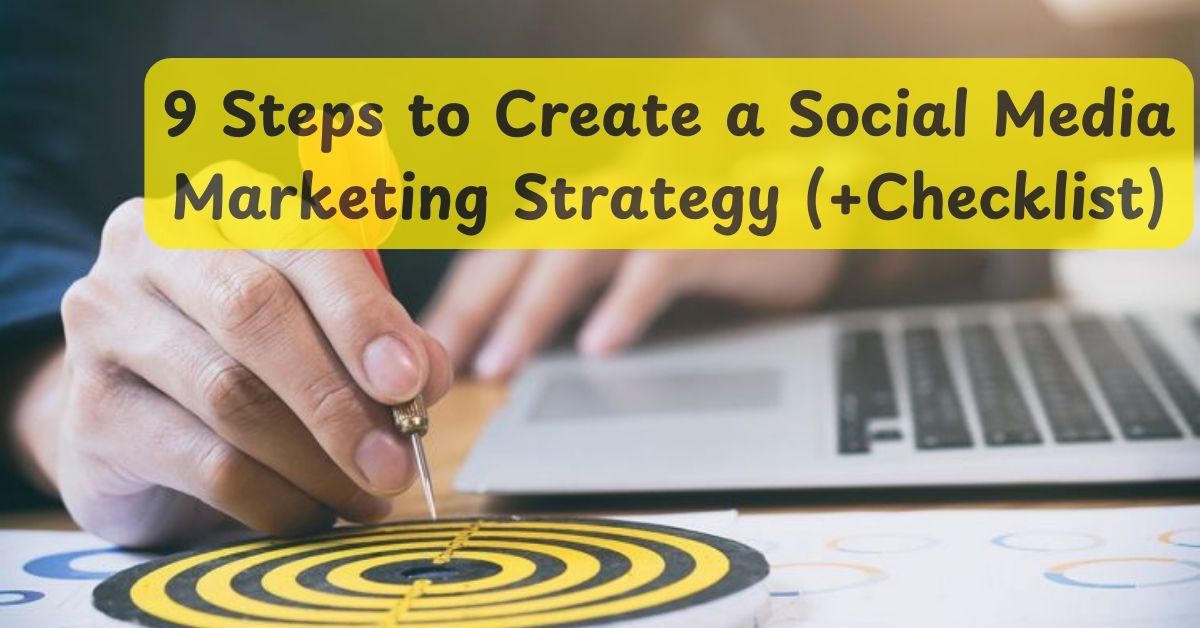Social media platforms are invaluable tools for connecting with your audience, building brand awareness, and driving traffic to your website. However, without a well-structured plan, it can feel like you’re aimlessly experimenting. That’s why a clear social media strategy is essential.
Even a straightforward plan helps you define your audience, determine the type of content to create, and align your efforts with your business objectives. Here’s a guide to creating a robust social media marketing strategy, complete with a downloadable template to help you get started.
What is a Social Media Marketing Strategy?
A social media marketing strategy outlines your goals and the steps to achieve them using various social platforms. It identifies the kind of content to post, the target audience for each platform, and the tactics for meeting your business goals.
Social media serves as a cost-effective tool for marketing, offering a range of functions such as:
- Driving website traffic and sales
- Leveraging influencer networks
- Increasing brand awareness
- Building an engaged community
- Connecting with customers and prospects
- Providing customer support
How to Create a Social Media Marketing Strategy
Success on social media requires a cohesive plan that integrates all elements of your marketing efforts. Here’s a step-by-step guide:
1- Set SMART Goals
Define specific, measurable, attainable, relevant, and time-bound (SMART) goals. These provide clear direction and allow you to track progress.
Example: If your overall goal is to increase visibility, a SMART goal might be: “Grow TikTok followers by 10% by the end of 2024.”
- Specific: Focus on TikTok follower growth.
- Measurable: A 10% increase is quantifiable.
- Attainable: The target is realistic.
- Relevant: Aligns with visibility objectives.
- Time-bound: Set a deadline.
Pro Tip:
Tailor goals for each platform. For example, Instagram may focus on boosting engagement, while LinkedIn emphasizes thought leadership.
2- Build Detailed Audience Profiles
Understanding your audience is critical. Beyond demographics like age and location, explore psychographics such as interests, values, and challenges.
- Gather Data: Use surveys, polls, focus groups, and social media insights.
- Create Buyer Personas: Develop profiles that include demographics, preferences, and online behavior.
Pro Tip:
Treat personas as real people to ensure content resonates authentically.
3- Research Your Competitors
Analyzing competitors can provide valuable insights into what works (or doesn’t) in your industry.
- Conduct a Competitive Analysis: Assess their platforms, posting frequency, content types, and engagement strategies.
- Identify Gaps: Look for opportunities to differentiate your brand, such as focusing on underutilized platforms or content types.
4- Perform a Social Media Audit
Evaluate your current social media presence to identify strengths, weaknesses, and opportunities.
- Assess content performance, audience engagement, posting frequency, and alignment with brand goals.
- Document baseline metrics like audience size and engagement rates to measure progress over time.
5- Choose the Right Platforms
Focus on platforms where your target audience is most active. Avoid spreading yourself too thin.
- Platform Suitability: Use TikTok or Instagram for visually engaging content and LinkedIn for professional networking.
- Start Small: Begin with 1-2 platforms and expand as your strategy matures.
Optimize profiles for each platform by maintaining consistent branding and using relevant keywords.
6- Develop a Content Strategy
Content is the backbone of any social media strategy.
- Format: Choose formats that resonate with your audience (e.g., videos, images, text posts).
- Type: Mix educational, entertaining, behind-the-scenes, and promotional content.
- Topics: Create content pillars to guide your strategy, such as tutorials, product updates, or industry news.
Pro Tip:
Customize strategies for each platform based on audience behavior.
7- Plan Content with a Social Media Calendar
A content calendar ensures consistency and helps you plan posts in advance.
- Schedule: Identify optimal posting times and frequencies for each platform.
- Document Trends: Stay adaptable to incorporate timely updates or trends while maintaining brand alignment.
- Tools: Use platforms like Hootsuite or a simple spreadsheet to organize content.
8- Engage with Your Audience
Social media is a two-way communication tool. Engaging with your audience builds trust and fosters loyalty.
- Respond Promptly: Reply to comments, messages, and tags to show your audience you value their input.
- Encourage UGC: Motivate followers to share content related to your brand.
- Run Contests: Promote engagement through giveaways or competitions.
Pro Tip:
Collaborate with influencers to expand your reach and credibility.
9- Track KPIs and Metrics
Measure your success by tracking relevant metrics. Choose KPIs aligned with your goals, such as:
- Reach and Impressions: Gauge visibility and exposure.
- Engagement Rates: Analyze likes, comments, and shares to assess content resonance.
- Conversion Rate: Measure the effectiveness of driving actions like purchases or sign-ups.
- Referral Traffic: Use tools like Google Analytics to monitor website visits from social media.
Pro Tip:
Use social listening tools to identify audience sentiment and refine your strategy accordingly.
Final Thoughts
A well-executed social media marketing strategy acts as a compass, guiding your efforts and optimizing outcomes. Regularly revisit and update your strategy to adapt to the dynamic social media landscape.
With these steps and a detailed plan, you can build a strong social media presence that fosters engagement, drives traffic, and achieves your business goals.
FAQs
Why is a social media strategy important?
A strategy ensures your efforts are purposeful and aligned with business objectives. It helps you identify your audience, create targeted content, and measure success effectively.
How do I choose the right social media platforms?
Focus on where your target audience is most active. For example, use TikTok for Gen Z, LinkedIn for B2B connections, and Instagram for lifestyle brands.
What are SMART goals in social media marketing?
SMART goals are Specific, Measurable, Achievable, Relevant, and Time-bound objectives that guide your strategy. For example: Increase Instagram engagement by 15% in three months.
How do I measure social media success?
Track metrics like:
1. Reach and impressions
2. Engagement (likes, comments, shares)
3. Conversions from campaigns
4. Website traffic via social media
What is the 50/30/20 rule in social media marketing?
The rule suggests allocating 50% of content to engage your audience, 30% to curated content, and 20% to promotional posts. This balance ensures you don’t overwhelm followers with sales pitches.
How often should I post on social media?
It depends on the platform and your audience. For instance, post daily on Instagram but 2–3 times weekly on LinkedIn. Use analytics to find optimal posting times.
How do I handle negative feedback on social media?
Respond calmly and professionally. Address concerns promptly and show empathy. Turning criticism into an opportunity to improve builds trust and credibility.

